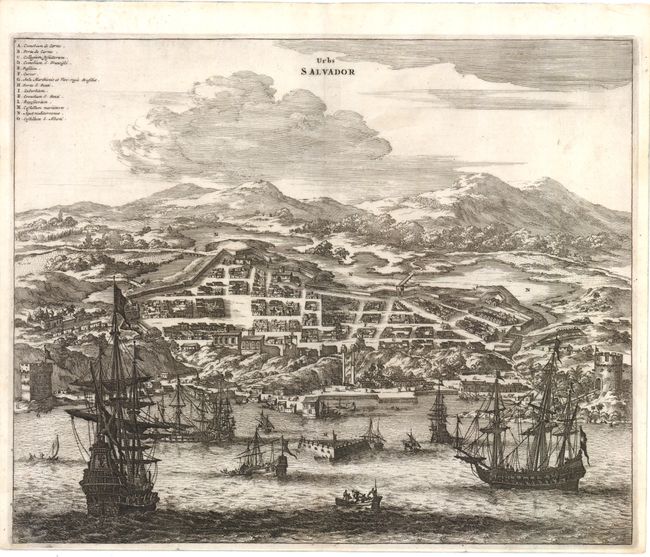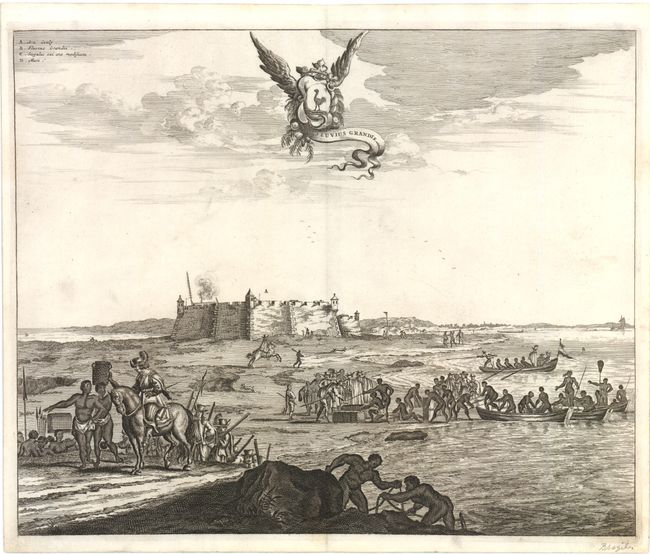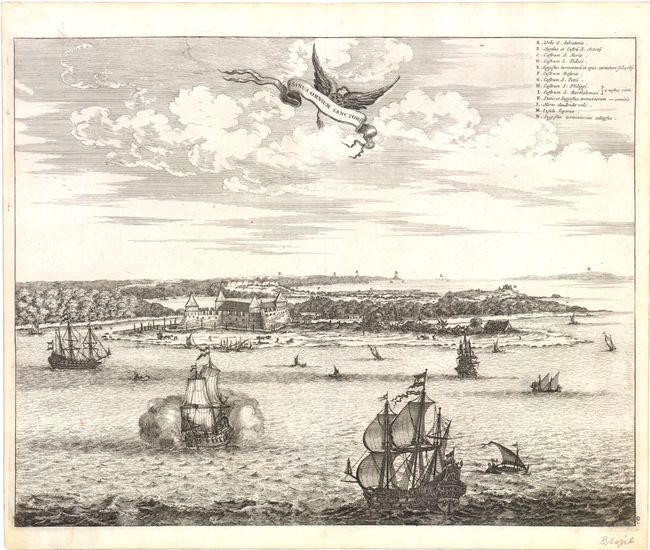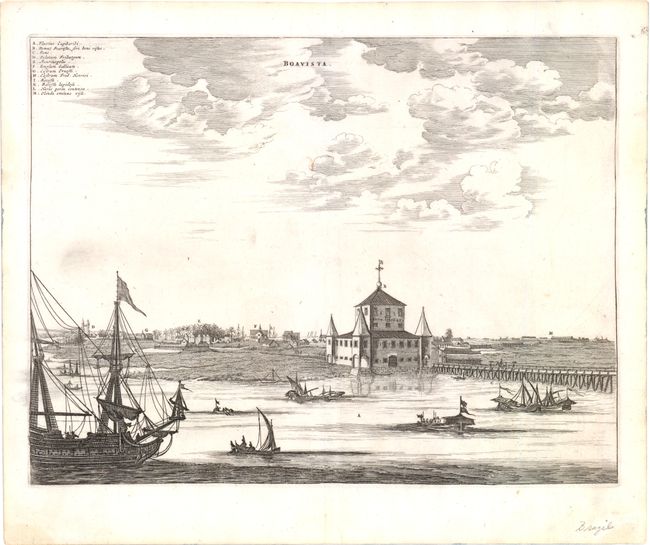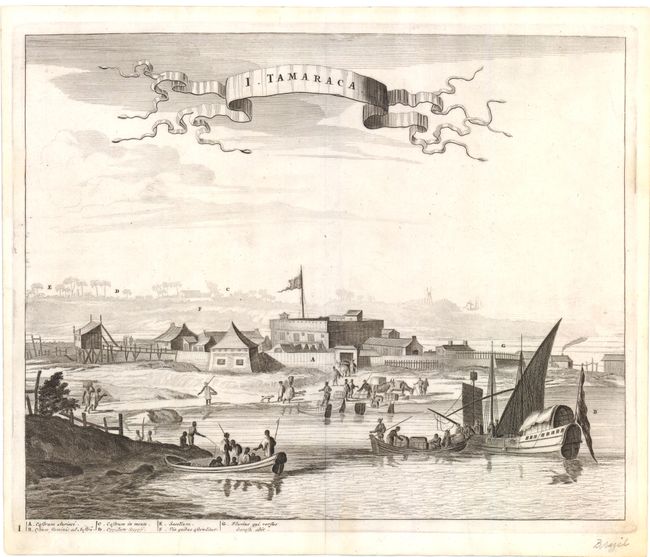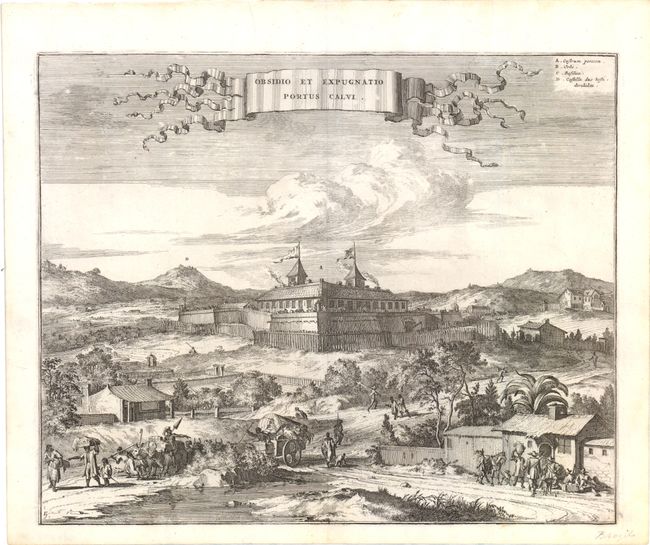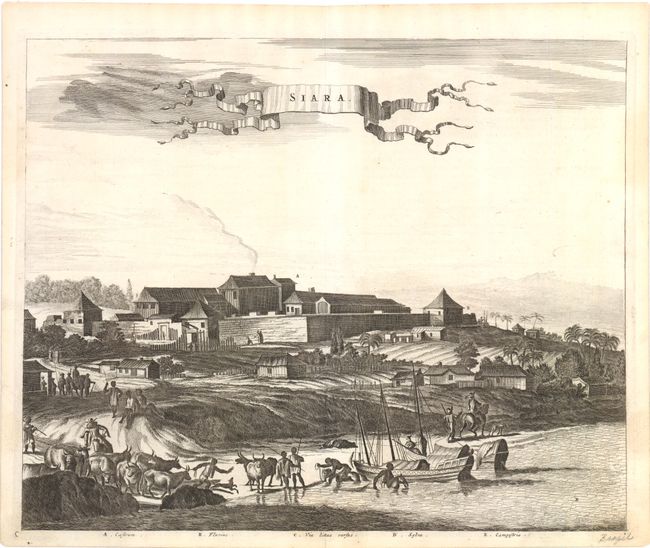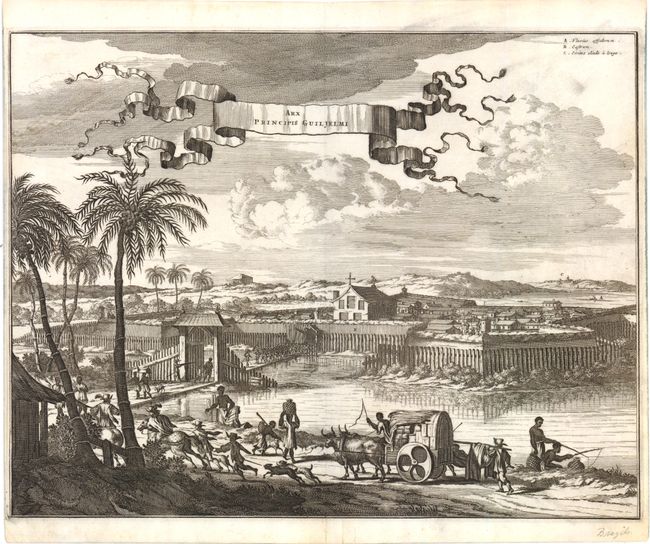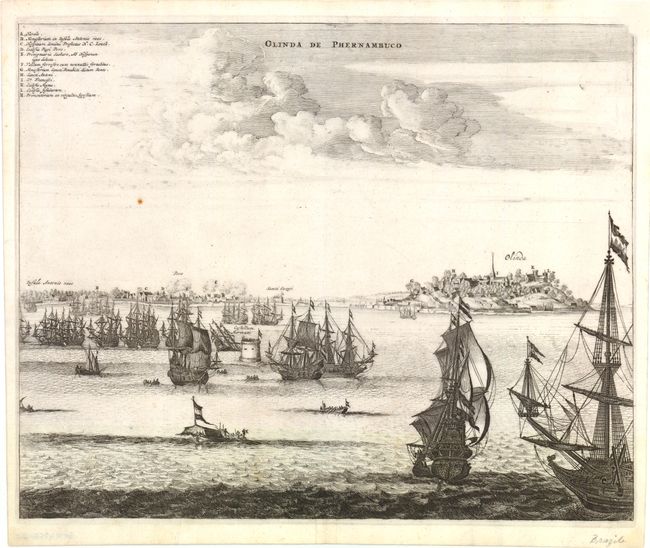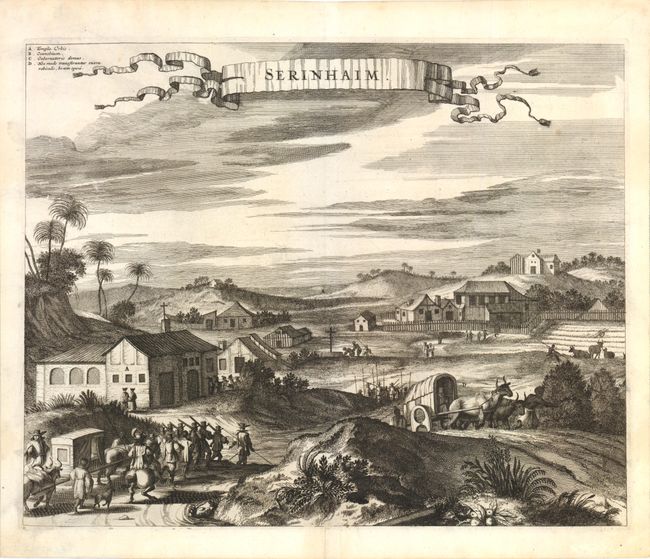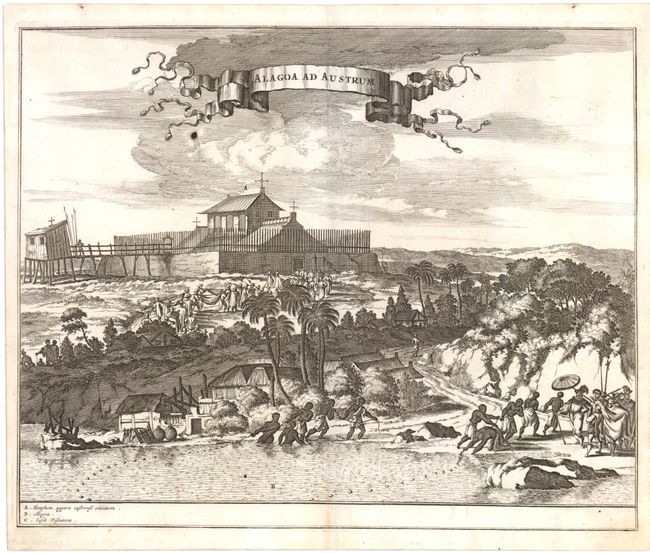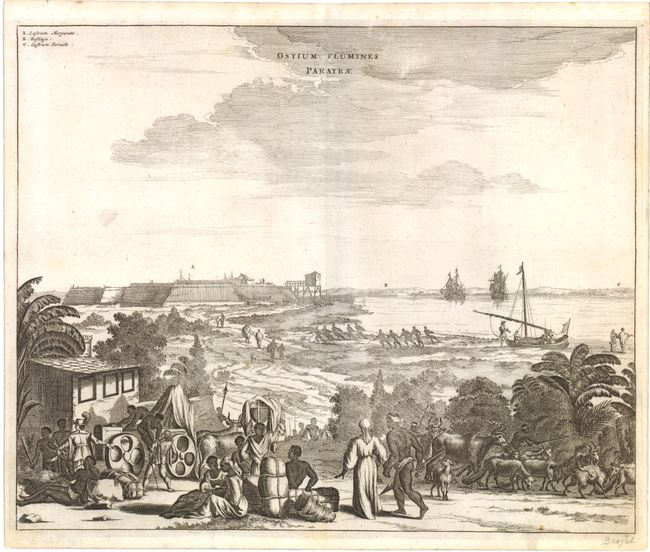Subject: Brazil
Period: 1671 (circa)
Publication: Die Nieuwe en Onbekende Weereld
Color: Black & White
Size:
14 x 11.5 inches
35.6 x 29.2 cm
Montanus' work was perhaps the greatest illustrated book on the New World produced in the seventeenth century. It contained over one hundred beautifully engraved plates, views, and maps of North and South America. The plates vividly depict forts, festivals, occupations, Dutch fleets, battles, religious rites, and customs of the native inhabitants. This important work was translated into German by Olivier Dapper, and into English by John Ogilby. Several of the plates were later acquired by Pierre Vander Aa.
A. Urbs Salvador. Fine copper engraving of the walled city of Salvador, the capital of the state of Bahia. with ships and boats filling the harbor in the foreground.
B. Fluvius Grandis. This finely engraved view depicts the heavily armed Fort of the tres Reis Magos along the Potengi River in today's Natal. In the foreground, Dutch soldiers oversee natives unloading goods from small row boats.
C. Sinus Omnium Sanctoru. This is a superb view of Todos os Santos Bay (All Saints Bay) with Salvador da Bahia in the background. The engraving illustrates the region when the Dutch were attempting to gain control of the Portuguese colonies in Brazil and her lucrative sugar trade. In 1624 the Dutch captured and sacked the Salvador da Bahia, and held it along with other northeast ports until it was retaken by a Spanish-Portuguese fleet. The city then played a strategically vital role in the Portuguese-Brazilian resistance against the Dutch in the 1630s. This view was taken from the work of Frans Post. His works are some of the earliest European paintings of Brazil and were eagerly reproduced in print by Dutch engravers.
D. Boavista. Fine view of the Dutch settlement in Boa Vista, located on the western bank of the River Branco. Today Boa Vista is the capital of the Brazilian state of Roraima. A large house on the water is the focal point of the scene, on which is inscribed Anno 1643.
E. I. Tamaraca. A fine view of Dutch Fort Oranje on the island of Itamaraca off the North east coast Brazil. Native people and boats fills the foreground and a key at bottom identifies the important sites.
F. Obisidio et Expugnatio Portus Calvi. This view of Porto Calvo, a city in the Alagoas region, depicts a simple wooden fort surrounded by a few small cottages. Porto Calvo controlled the passage of the Manguaba River, and was at the frontline of Portuguese-Dutch hostilities in the early 1630's.
G. Siara. Finely engraved view of Ceara with its high walls and surrounding village. Natives are shown in the foreground loading boats and herding cattle.
H. Arx Principis Guiljelmi. Impressive view of the Dutch Fort William on the Rio Afagados with its central church and strong palisades. Olindia is located on a hill in the background. Fort Prince William was part of the Dutch defences of Pernambuco. This detailed engraving was inspired by a 1639 painting by celebrated Dutch painter Frans Post.
I. Olinda de Phernambuco. This splendid view illustrates the Dutch attack on the Portuguese city of Olinda in 1630. Throughout most of the seventeenth century Portugal and Holland had a commercial agreement in which the Portuguese colonies in the New World produced sugar, and the Dutch distributed it across Europe using their vast commercial network. After the kingdoms of Portugal and Spain merged, the Dutch lost their distribution monopoly and created the West Indian Company in 1621. Shortly thereafter the Dutch began its attack on Pernambuco, first at Salvador and then at Olinda.
J. Serinhaim. This copper engraving shows a busy village filled with soldiers, workmen, ox-drawn carts and a church.
K. Alagoa ad Austrum. A fascinating view of Alagoa (Maceio) with native fishermen in the foreground and a religious procession in the background.
L. Ostium Flumines Paraybae. This is the entrance to the Paraiba river in Brazil with a nice view of Castle Margareta on the Brazilian coast. The busy scene is filled with fishermen, shepherds and merchants loading their wagons.
References:
Condition: A
These are all in very good to near fine condition, with a few faint stains, minor creases, and a couple of short tears in blank margins.


